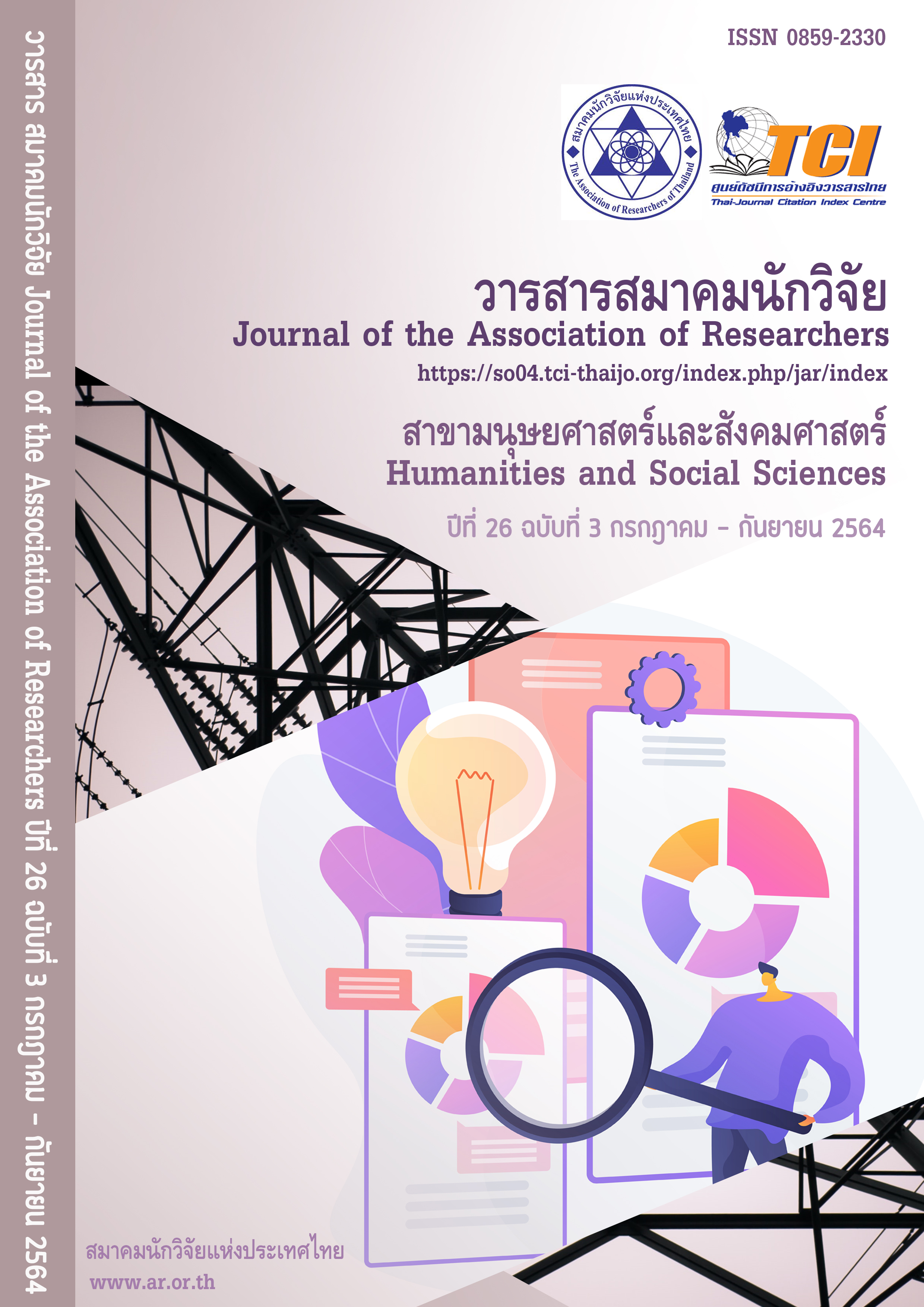The study of Factors affecting the engagement of the video game content viewer on YouTube websites.
Main Article Content
Abstract
This paper has two main purposes: to compare the needs of engagement levels among YouTube viewers based on different demographic variables and to study the influences of motivations that affect the engagement of YouTube viewers. The target participants of this research are the group of 400 viewers in Thailand who visit YouTube at least once per month. Using the Convenience Sampling method, respondents answer the questionnaires by themselves. The statistics used in this research are Percentage, Mean, Standard deviation, t-test, One-Way ANOVA, and Multiple Linear Regression to find which variables significantly affected the engagement of videogame contents viewer on YouTube.
The research found the following results; The differences in demographics (Gender, Age, Education, Occupation) did not significantly contribute to YouTube engagement. However, aspects of viewers' motivations including Information Giving, Self-Status Seeking, and Social Interaction contributed significantly to YouTube engagement. In the end, this paper suggests that YouTubers should focus on videogame database building, pay attention to viewers, and create an online community to increase the viewers’ satisfaction and engagement rate.
Article Details
บทความที่ปรากฏในวารสารนี้ เป็นความรับผิดชอบของผู้เขียน ซึ่งสมาคมนักวิจัยไม่จำเป็นต้องเห็นด้วยเสมอไป การนำเสนอผลงานวิจัยและบทความในวารสารนี้ไปเผยแพร่สามารถกระทำได้ โดยระบุแหล่งอ้างอิงจาก "วารสารสมาคมนักวิจัย"
References
ยุบล เบ็ญจรงค์กิจ. (2534). การวิเคราะห์ผู้รับสาร. กรุงเทพฯ : ภาควิชาการประชาสัมพันธ์ คณะนิเทศศาสตร์ จุฬาลงกรณ์มหาวิทยาลัย
ศุภรานันท์ กาญจนกุล. (2560). พฤติกรรมและความคิดเห็นของผู้บริโภคในกรุงเทพมหานคร ต่อการรับชม Live Video Streaming : วิทยานิพนธ์ สาขาวิชาการตลาด มหาวิทยาลัยธุรกิจบัณฑิตย์
ศิริวรรณ เสรีรัตน์ และคณะ. (2552). การบริหารการตลาดแนวใหม่. กรุงเทพมหานคร: ธรรมสาร
ศิริพร วชิรโสวรรณ. (2563). อิทธิพลของการใช้ประโยชน์และความพึงพอใจ และการมีส่วนร่วมในรายการรีวิวอาหารในช่องยูทูบ ต่อความตั้งใจใช้บริการร้านอาหารของผู้ชมรายการ : วิทยานิพนธ์ คณะมนุษย์สาสตร์และสังคมศาสตร์ สาขาวิชาสื่อสารการตลาด มหาวิทยาลัยบูรพา
ศศิมา ชัยวรจินดา. (2555). พฤติกรรมการสื่อสาร การใช้ประโยชน์ และความพึงพอใจต่อเว็บไซต์เครือข่ายสังคมเฟซบุ๊ค (Facebook) ของประชาชนในกรุงเทพมหานคร : วิทยานิพนธ์ ศิลปศาสตรมหาบัณฑิต, สาขาวิชานิเทศศาสตร์, คณะนิเมศศาสตร์และสารสนเทศศาสตร์ มหาวิทยาเกษตรศาสตร์
Balakrishnan, J. Griffiths, M.D. (2017). Social media addiction: What is the role of content in YouTube? Journal of behavioral addictions, 6(3), 364-377
Crowdleaks. (2019). ทำความรู้จักกับยูทูบเบอร์ (Youtuber) “อาชีพใหม่รายได้พุ่ง https://crowdleaks.org
/มาทำความรู้จักกับยูทูบ
Hootsuite, We are social. (2020). Digital 2020 Thailand. https://www.slideshare.net/DataReportal/ digital-2020-thailand-january-2020-v01
Khan, M.L. (2017). Social media engagement: What motivates user participation and consumption on YouTube?. Computer in human behavior, 66, 236-247.
Longtunman. (2020). กรณีศึกษา ยูทูบเบอร์ มีรายได้มาจากไหน? https://www.longtunman.com/25114
Translated Thai References
Benjarongkij, Y. (1991). Audience Analysis.. Communication Arts Management and Innovation, Chulalongkorn University.
Chaiworajinda, S. (2018). Communication behavior uses, and gratifications towards Facebook of people in Bangkok. A Thesis for Arts Program, Kasetsart University.
Crowdleaks. (2019). Let know Youtuber “New Carrier Great Income” https://crowdleaks.org/มาทำความรู้จักกับยูทูบ
Kanchanakul, S. (2017). Behavior and Opinion of Bangkok Consumers towards Live Video Streaming. A Thesis for Master of Business Administration, Dhurakij Pundit University.
Longtunman. (2020). Where does the Youtuber get income? https://www.longtunman.com/25114
Serirat, S. (2009). New Marketing Management, Bangkok: Thammasarn.
Wachirasowan, S. (2020). User and Gratifications, Engagement on YouTube Food Channels – Impact on Viewer Purchase Intention. A Thesis for Master of Communication Arts, Burapha University.


